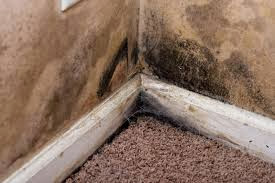What is mold?
Mold is an organism under the kingdom of fungi. It is
neither a plant nor an animal. Unlike, plants molds cannot synthesis their own
food through photosynthesis under the sunlight. As a matter of fact, the UV ray
in sunlight could inhibit their growth. The mold is a detritivore, organism
that decomposes other decaying organism to obtain food. These decaying organism
can be a dead plant, leaves or even decaying dead animal.
You can find molds growing in the outdoor at places such as
in the soil, on dead wood, decaying plants or dead animals. Meanwhile, inside
the house they commonly grow on the carpet, on paper, on leather, on walls, on
wood and most importantly on food. You can find out more about where molds
usually grow at Where Mold Grows.
Condition for Molds to Grow In the House.
The main factor in mold growth is moist apart from oxygen
and carbon rich materials. You can find mold growing almost anywhere provided
there is enough moisture. To know more about causes of mold growth you can
check it out at Causes of Mold.
Molds will not grow in houses unless there is a moisture
problem. The moisture can accumulate due to humidity, condensation, or water
intrusion from leaks, spills, floods, etc. Most molds only require suitable
materials to be moist for 24-48 hours before they can grow.
Molds that can survive on only humidity are called
Xerophiles, organism that can survive on very little water, whereas other molds
require asufficient amount of moisture to grow. To prevent mold growth at home
is to limit moisture.
To find out more about preventing mold in your house,
please visit Prevent Mold.
Other than moisture, molds also need suitable temperature to
grow. Mostly, they grow best in warm or room temperature. However, some species
of mold can grow in extreme temperature of about 2°C. If environment is
unfavorable, they would not necessarily die; instead, they might lay dormant
until the right condition is met.
Mold Biology Information
A colony of mold is considered a single organism as it is
apparent to the naked eye. Under microscope, the mold has cellular projection
or filaments called hyphae. These form a
network creating a large body known as mycelium. In reality, molds are
microscopic singly: hence, we can only see them in large colonies.
The function of the hyphae is to digest food.
Mold digest
food by releasing certain enzyme from the hyphae. Then, the hyphae absorb the
nutrients and passed them to the mycelium. These induce colony growth.
If mold receive sufficient needs such as suitable
temperature, enough oxygen, sunlight and food; this could induce spore
formation to create new colonies. These spores are created at the hyphae cells .
A mold reproduce similar to a tree with seed.
After the spores are completely formed, they will be transmitted
via air. If the spore lands on a moist
area with sufficient nutrients, oxygen and light, it will germinate into hyphae
then further grow into a colony.
Ungerminated
mold spores continually float through the air outdoors and indoors and it is
impossible to eliminate them all inside buildings. Spores are resilient and
have high resistance; even if they do not germinate they can last for years.
